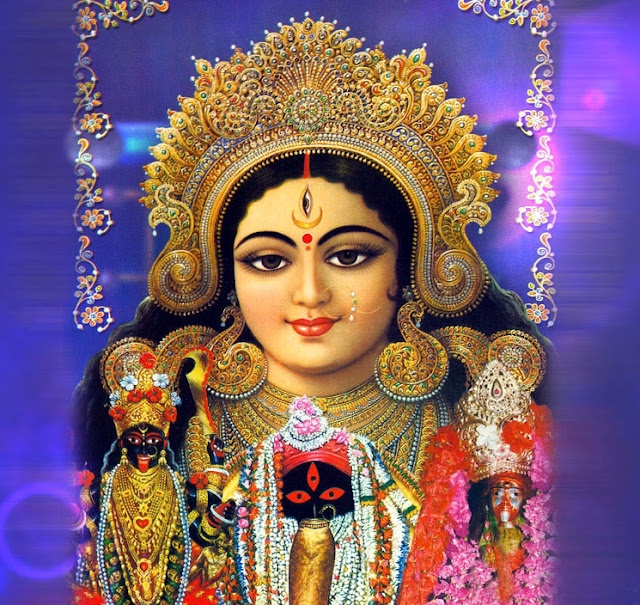Every year in the month of mid-March, many Hindu visitors visit the Hinglaj Shaktipeeth to pray Mata Sati and get rid of their past life sins. It is believed that it is the place where Sati's head fell, making it a prominent spot of worship. However, a surprising thing about visiting this holy temple is that you would require a proper visa and passport. Well, this Shaktipeeth is not located in India, but across the border in Pakistan.
Situated in Balochistan province, this shrine is called Hinglaj, and comes under the Pakistan province. Hinglaj (Sanskrit: हिङ्ग्लाज) is an important pilgrimage place for Hindus in Balochistan, Pakistan and Kuldevi of many Charan, Kshatriya and other Hindu Communities of India. It is situated in Balochistan province, which is about 250 km north of Karachi. Hinglaj shrine is near the peak of the mountains of the Makran Coastal Range.
It is approximately 20 km from the Arabian Sea and 120 km from the Indus River Delta. The area is extremely dry and infertile. The pilgrimage also called 'Nani ki Haj' by local Muslims that takes place before summer. The pilgrimage starts at a place near the Hao River (located 10 km from Karachi).
Baloch is a minority community in Pakistan, and surprisingly Hindu believers have taken care of this holy shrine for many centuries now. That’s the key reason why it is still protected in the fundamentalist state of Pakistan. The name of Hinglaj lends itself to the Hingol River and the Hingol National Park which at 6,200 square kilometers largest in Pakistan. As it is located in a desert which is called Maru (in Sanskrit), the shrine is referred to in holy scripts as "Marutirtha Hinglaj" which means Hinglaj, the Temple of the Desert.
 "Marutirtha Hinglaj" (Bengali: মরুতীর্থ হিংলাজ) is also the name of the novel, written in Bengali by Kalikananda Abadhut who made a pilgrimage to Koteshwar and Hinglaj, Kutch. Basically, the novel is based on real experience and has later been adapted into a very successful Bengali movie of the same name (Marutirtha Hinglaj in 1967, Director: Bikash Roy; casting: Anil Chatterjee, Chandrabati Devi, Sabitri Chatterjee, Uttam Kumar, Pahari Sanyal and Bikash Roy).
"Marutirtha Hinglaj" (Bengali: মরুতীর্থ হিংলাজ) is also the name of the novel, written in Bengali by Kalikananda Abadhut who made a pilgrimage to Koteshwar and Hinglaj, Kutch. Basically, the novel is based on real experience and has later been adapted into a very successful Bengali movie of the same name (Marutirtha Hinglaj in 1967, Director: Bikash Roy; casting: Anil Chatterjee, Chandrabati Devi, Sabitri Chatterjee, Uttam Kumar, Pahari Sanyal and Bikash Roy).  Another interesting fact of this shrine is that it is located inside a cave, and even Muslim people come to pay their tribute here. Mata Hinglaj like Vaishno Devi is in a cave. She is worshiped as Kuldevi by many Anavil Brahmin, Kshatriya as well as other Hindu communities of India like Bhavsar, Bhanushali,Kapdi, Kapadiya, Khatri Brahmakshatriya, Charan (deviputra), etc. Pilgrims walk on barefoot over the rocky desert area to reach the temple as a form of penance. Hingla River also flows from the Goddess Shaktipeeth.
Another interesting fact of this shrine is that it is located inside a cave, and even Muslim people come to pay their tribute here. Mata Hinglaj like Vaishno Devi is in a cave. She is worshiped as Kuldevi by many Anavil Brahmin, Kshatriya as well as other Hindu communities of India like Bhavsar, Bhanushali,Kapdi, Kapadiya, Khatri Brahmakshatriya, Charan (deviputra), etc. Pilgrims walk on barefoot over the rocky desert area to reach the temple as a form of penance. Hingla River also flows from the Goddess Shaktipeeth.
Muslims call Maa Hinglaj as Nani (maternal grandmother). Hindu and Muslims come together to worship Mata Durga in this Shaktipeeth, and treat each other as family. According to religious texts, after killing Ravana, a learned Brahmin, Shri Rama had become a sinner. To get rid of his sin, he visited this holy temple and performed a Yagya here. There is only a mark of a Moon and a Sun on this holy place believed to have been made by Lord Ram.
 The important spot during the pilgrimage is the mud volcano called 'Chandrakup.' It is Asia's largest mud volcano that releases semi-fluid mud rather than magma. It is believed as the holy item and is said as 'Baba Chandrakup' (means Father Moonwell). At night, an interesting ritual is performed here. At night, local people cook rotis at the base of the volcano. Ingredients like jiggery, sugar, and ghee are also mixed in them. These rotis are then offered to the volcano in the morning, making sure they don’t touch the ground the whole night. This is considered a sacred activity.
The important spot during the pilgrimage is the mud volcano called 'Chandrakup.' It is Asia's largest mud volcano that releases semi-fluid mud rather than magma. It is believed as the holy item and is said as 'Baba Chandrakup' (means Father Moonwell). At night, an interesting ritual is performed here. At night, local people cook rotis at the base of the volcano. Ingredients like jiggery, sugar, and ghee are also mixed in them. These rotis are then offered to the volcano in the morning, making sure they don’t touch the ground the whole night. This is considered a sacred activity.
In popular media: Few stories:
- Hinglaj Shaktipeeth was the backdrop for the Telugu Film “Sahasam” in 2013 starring Gopichand and Shakti Kapoor and Taapsee Pannu. The protagonist in a fictional story belongs to a family migrated from Pakistan during partition. He visits Pakistan to fetch his ancestral property left in Pakistan.
- In the Bengali popular film named "Marutirtha Hinglaj" directed by Bikash Ray. (Director: Bikash Roy; casting: Anil Chatterjee, Chandrabati Devi, Sabitri Chatterjee, Uttam Kumar, Pahari Sanyal, Bikash Roy).





Useful post sharing. Thank you very much. Best astrologer in Coimbatore | Astrological gemstones in Coimbatore
ReplyDeleteKamakhya temple black magic
ReplyDelete